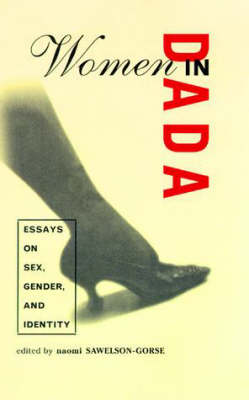The MIT Press
1 total work
Women in Dada
Finally, a look at the role of women in the shaping of the high-spirited-but hardly feminist-Dada monement.
For all of its iconoclasm, the Dada spirit was not without repression, and the Dada movement was not without misogynist tendencies. Indeed, the word Dada evokes the idea of the male-both as father and as domineering authority. Thus female colleagues were to be seen not heard, nurturers not usurpers, pleasant not disruptive.This book is the first to make the case that women's changing role in European and American society was critical to Dada. Debates about birth control and suffrage, a declining male population and expanding female workforce, the emergence of the New Woman, and Freudianism were among the forces that contributed to the Dadaist enterprise.
Among the female dadaists discussed are the German emigre Baroness Elsa von Freytag-Loringhoven; Berlin dadaist Hannah Hoech; French dadaists Juliette Roche and Suzanne Duchamp; Zurich dadaists Sophie Taeuber and Emmy Hennings; expatriate poet and artist Mina Loy; the "Queen of Greenwich Village," Clara Tice; Margaret Anderson and Jane Heap, the lesbian couple who ran The Little Review; and Beatrice Wood, who died in 1998 at the age of 105. The book also addresses issues of colonialist racism, cross-dressing and dandyism, and the gendering of the machine. The bibliography was compiled by the International Dada Archive (Timothy Shipe and Rudolf E. Kuenzli).
Contributors
Eleanor S. Apter, Barbara J. Bloemink, Willard Bohn, Carolyn Burke, William A. Camfield, Whitney Chadwick, Dorothea Dietrich, Susan Fillin-Yeh, Paul B. Franklin, Renee Riese Hubert, Marisa Januzzi, Amelia Jones, Marie T. Keller, Rudolf E. Kuenzli, Maud Lavin, Margaret A. Morgan, Dickran Tashjian, Elizabeth Hutton Turner, Barbara Zabel
